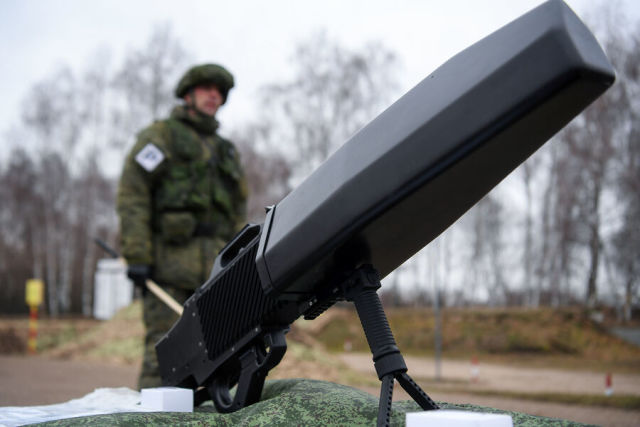"Stupor", "Harpoon", "Alabuga": how electromagnetic weapons affect the course of a special operation A source in the Ministry of Defense reported on the successful use of the latest hand-held electromagnetic guns "Harpoon-3" during the special operation.
The Russian army also has other anti-drone weapons - for example, "Stupor". "Newspaper.Ru" - about the principle of operation of electromagnetic guns and their prospects.
During the military special operation on the territory of Ukraine, the Russian military has successfully used hand-held systems to combat unmanned aerial vehicles (UAVs) "Harpoon-3". This is reported by TASS with reference to sources in law enforcement agencies.
"Russian units are successfully using the latest hand-held anti-drone systems "Harpoon-3" during the military operation. Enemy drones are destroyed by an electromagnetic pulse," he said.
The interlocutor of the agency stressed that calculations of electromagnetic complexes destroy enemy drones in case of their detection. At the same time, one of the servicemen told TASS that about 20 aircraft were shot down in two weeks with the help of such electromagnetic complexes.
The Russian army has other electromagnetic complexes in service. These are "Stupor", "Alabuga", "Satchel", REX-1, but there are not many of them in the troops, he told the Newspaper.Ru" Mikhail Degtyarev, editor-in-chief of Kalashnikov magazine.
- he explained.
According to the expert, work on the creation of such types of weapons is now continuing with greater activity than before the start of the military special operation in Ukraine.
In Russia, tests of electromagnetic weapons have been conducted since 2015. The first developments appeared in the early 1990s, and technical ideas existed earlier. Back in the 1950s, academician Andrei Sakharov proposed to create it, whose idea was a non-nuclear powerful munition, during the explosion of which EMP (electromagnetic pulses) were formed as a result of compression of the magnetic field. There were also developments of the NIIRP (now the Almaz-Antey Air Defense Concern) and the Physics and Technology Institute named after him. Ioffe.
Among the first representatives of electromagnetic weapons can be called the "Satchel" complex (in the imported version "Satchel-E"). The military was not satisfied with its dimensions (based on the MAZ tractor) and the range in the upgraded version of 12-14 km. Its use is intended rather to cover stationary objects or a military column on the march.
The missile itself is only a means of delivering a charge to the battlefield. The whole point is in the charge, which does not have traditional means of destruction in the form of fragments and an explosive wave, while the effectiveness of its use is comparable to a nuclear strike. The charge itself is triggered at an altitude of 200-300 m and "burns out" all electronics within a radius of 3.5-4 km.
The current electromagnetic complexes "Stupor", "Harpoon-3" and REX-1 are united not only by the principle of action of the defeat. They are portable, hand-held, weigh about 5 kg, have a range of up to 2 km and are used to disable small and low-speed aircraft - primarily drones. The positions of such electromagnetic guns are located directly on the front line or cover the positions of barrel artillery and MLRS.
- I told the newspaper.Ru" military expert Viktor Murakhovsky. - At the same time, they are one of the most promising areas in the development of modern weapons belonging to the category of non-lethal weapons. In theory, they needed to give priority in development on a par with electronic warfare, in which Russian scientists have generally succeeded. The potential of EMI was not seen and appreciated in time, as was previously the case with drones. Nevertheless, some potential has already been laid and it needs to be developed for the future. Moreover, other countries have a noticeable lag on this topic."
Work on the creation of electromagnetic weapons is underway in the United States, where it is supposed to radically change the strategy of conducting future wars due to promising remote impact technologies. The use of electromagnetic weapons is considered part of the element of the American "third compensation strategy", which provides for the use of the latest technologies and "management methods to achieve an advantage over the enemy." The United States, as part of the CHAMP project, tested a rocket with electromagnetic stuffing and tested a ground-based electronic suppression system for drones. Serial production was not reported.
Victor Sokirko

